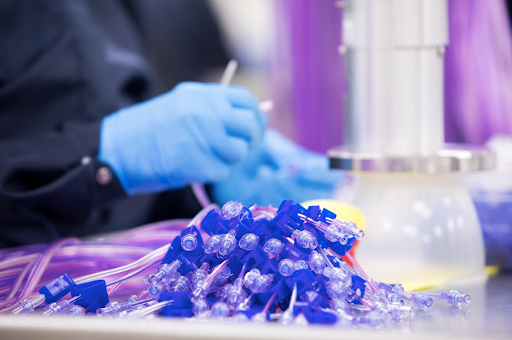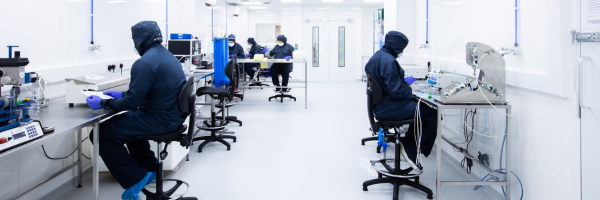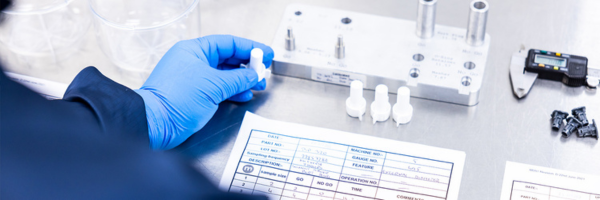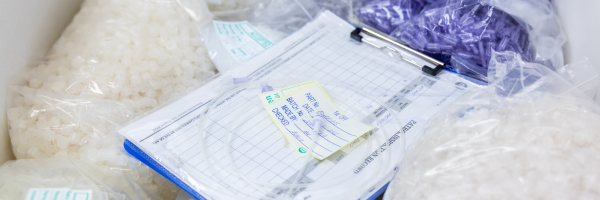
Medical device classification in the UK is a critical early step in bringing any product to market. Getting it right can mean the difference between product launch delays and streamlined success. Under the UK Medical Devices Regulations 2002 (as amended), devices are categorised by risk level, which directly impacts the conformity assessment route, required documentation and oversight needed.
This article breaks down how medical device classification in the UK works, what each class means for manufacturers and how businesses can prepare for regulatory compliance. It also explores how UK rules continue to evolve post-Brexit, and why aligning your manufacturing strategy with classification requirements from the outset is essential.
Looking for a manufacturer who understands the importance of regulatory compliance from day one? Explore our full device project management service.
What is Medical Device Classification?
Definition and Importance
Medical device classification is the process of categorising a device based on the risk it poses to patients and users, its intended purpose and how it interacts with the human body. In the UK, this classification affects how they are assessed, what documentation is required and how long it will take to get them to market.
Correctly identifying the classification of a medical device is critical for a smooth and compliant development pathway. Errors at this stage can have significant implications:
- Delays in market access caused by rework or resubmissions
- Increased regulatory costs from unexpected conformity assessments
- Reputational and financial damage if devices are recalled or rejected
- Potential penalties from the Medicines and Healthcare products Regulatory Agency (MHRA)
At Meridian Medical, we focus on manufacturing medical devices in full compliance with all applicable regulations. While we do not advise on classification, working with a manufacturer who understands regulatory demands ensures your device is produced to the right standards, helping to avoid delays and support smooth market access.
“Understanding classification is strategic. It shapes everything from design to delivery.”
- James Fenton, Managing Director at Meridian Medical
Regulatory Framework in the UK
In the UK, the classification of medical devices is defined by the UK Medical Devices Regulations 2002 (as amended), which are enforced by the MHRA. Devices are categorised into four risk-based classes: Class I, Class IIa, Class IIb and Class III.
The device’s classification determines the conformity assessment route, and whether a UK Approved Body must be involved. For higher-risk classes, robust clinical evaluation and quality assurance systems are essential.
To ensure smooth market access across the UK, manufacturers must comply with UKCA marking requirements for Great Britain, while CE marking remains necessary for devices marketed in Northern Ireland under the Northern Ireland Protocol.You can learn more about this in our blog: How Are Medical Devices Approved in the UK?
UK Medical Device Classification System
Class I Devices
These are low-risk devices with minimal potential to cause harm, such as bandages or handheld surgical instruments.
Class IIa Devices
Class IIa devices pose a moderate risk and typically include devices like suture needles and standard hearing aids.
Class IIb Devices
Higher-risk devices such as ventilators and apnoea monitors fall under Class IIb. They demand a more rigorous conformity assessment by a UK Approved Body.
Class III Devices
Class III devices present the highest risk and include implants and life-supporting equipment, for example pacemakers and total hip joint replacement systems. These require comprehensive scrutiny from a UK Approved Body, including clinical evaluations and strict post-market surveillance plans to ensure ongoing safety.
Determining Your Device’s Classification
Before placing a medical device on the UK market, it’s essential to determine its correct classification. This step influences everything from required documentation to the level of regulatory scrutiny involved.
Factors Influencing Classification
According to the MHRA’s guidance, a medical device is classified depending on key factors including:
- the intended purpose of the device,
- how long it’s intended to be in use for
- if the device is invasive or surgically invasive
- if the device is implantable or active
- if it contains a substance which is considered to be a medicinal substance
For further details relating to classification rules for a general medical device, please refer to regulation 7, Part II of the UK MDR 2002.
Steps to Determine Classification
The process of classifying a general medical device begins with understanding how the device will be used and assessing it against the regulatory rules.
- Define the Intended Purpose: Clearly articulate what the device is intended to do, its medical purpose and how it will be used.
- Review Classification Rules: Examine the classification criteria outlined in the UK MDR 2002, Schedule 2A. These rules consider factors such as duration of contact with the body, invasiveness and whether the device is active or implantable.
- Match Device Characteristics to Classification Rules: Assess how your device’s features align with the classification rules to determine its appropriate risk class. This involves evaluating the device’s intended use, mode of action and other relevant factors.
- Consult Regulatory Guidance or Experts: If uncertainty remains regarding classification, consult the MHRA’s published guidance or seek advice from regulatory professionals to ensure accurate classification. The MHRA also provides information on borderline products and how to determine if a product qualifies as a medical device.
Regulatory Requirements for Each Class
Each medical device class under UK regulations is subject to a specific conformity assessment route. The higher the classification, the more rigorous the process required to demonstrate safety and performance before a device can be placed on the market.
Conformity Assessment Procedures
- Class I (non-sterile, non-measuring) devices can typically be ‘self-certified’ by the manufacturer. If the manufacturer is satisfied that the medical device complies with the requirements in the UK MDR 2002, a statement must be written to declare this. The next step is to apply to an approved body, located in the UK, to approve and certify the parts of the manufacturing process that relates to sterility or metrology (if the medical device includes sterile products or a measuring function).
- Class IIa must undergo conformity assessment by a UK Approved Body. This includes either examination and testing of each product or homogenous batch of products, or auditing of technical documentation and quality management systems to verify the device meets safety and performance requirements before receiving UKCA marking.
- Class IIb devices pose a higher risk and require a more detailed conformity assessment by a UK Approved Body. This includes either an audit of the full quality assurance system or a type-examination, along with some of the conformity assessment requirements applicable to Class IIa devices.
- Class III represents the highest risk and undergoes the most rigorous assessment by a UK Approved Body. This includes either an audit of the full quality assurance system with a design dossier examination or a type-examination, along with some of the conformity assessment requirements applicable to Class IIa devices.
Documentation and Compliance
For all device classes, manufacturers must prepare and maintain comprehensive technical documentation demonstrating compliance with relevant UK regulations. This includes evidence of conformity to safety and performance requirements, risk management, clinical evaluation and post-market surveillance plans.
For Class I devices, this documentation supports self-certification or, for sterile/measuring devices, conformity assessment by a UK Approved Body.
For higher-risk classes (IIa, IIb, III), technical documentation undergoes thorough review by the Approved Body as part of the conformity assessment, ensuring the device meets stringent safety and quality standards before UKCA marking can be applied.
Common Challenges in Medical Device Classification
Accurately classifying a medical device is crucial but can be complex, with two common challenges.
Misclassification Risks
Misclassifying a device can lead to delays in market access, increased costs from rework and potential regulatory penalties. It may also impact patient safety and damage a company’s reputation.
Navigating Regulatory Changes
Medical device regulations evolve, requiring manufacturers to stay informed and adapt quickly. Changes in classification rules or conformity assessment procedures can affect compliance strategies and timelines, making ongoing regulatory vigilance essential to avoid disruptions.
Recent Updates in UK Medical Device Regulations
The UK’s medical device regulatory landscape continues to evolve post-Brexit, with several key updates from the MHRA impacting medical device development.
Post-Brexit Regulatory Changes
Since Brexit, the UKCA mark has been introduced to replace the EU CE mark for devices placed on the Great Britain market. However, general medical devices compliant with the EU Medical Devices Directive (EU MDD) or the EU Active Implantable Medical Devices Directive (AIMDD) that have a valid declaration and CE marking can continue to be placed on the Great Britain market until the expiry of the certificate or 30th June 2028.
It is important to note that the EU no longer recognises UK notified bodies, which means UK notified bodies cannot issue CE certificates and have transitioned to UK Approved Bodies under the UK regulatory system.
Impact on Manufacturers and Importers
Manufacturers and importers must keep up to date with MHRA guidance to avoid compliance issues. The extended transition period provides flexibility, but proactive planning is essential to meet UKCA marking deadlines and maintain market access. Changes also impact technical documentation and post-market surveillance responsibilities.
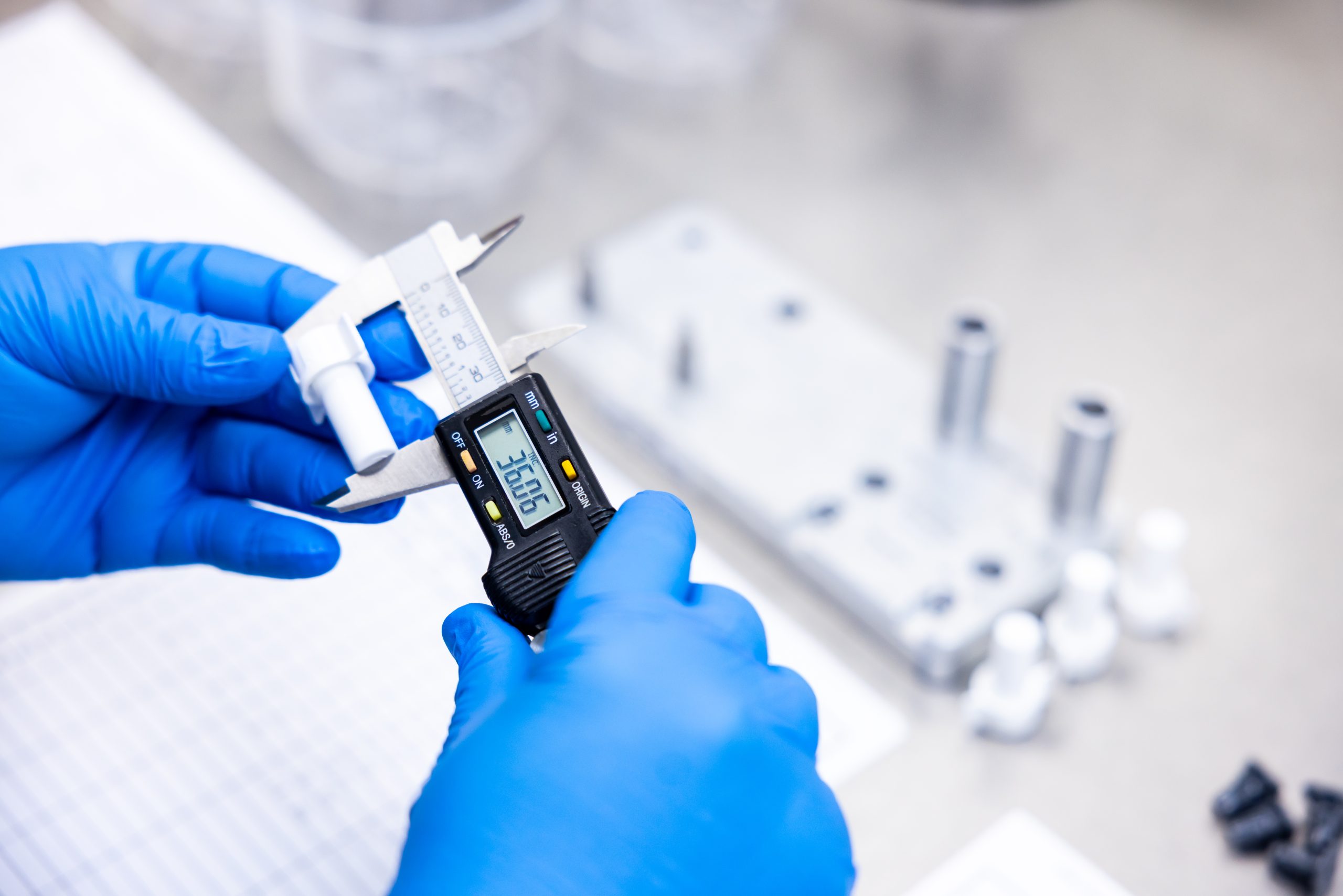
From Blueprint to Bedside: How Meridian Medical Navigates Classification with Clients
At Meridian Medical, we support clients throughout the development of their medical device by ensuring that all manufacturing procedures are aligned with the correct classification from the start. While we don’t offer regulatory consultancy, our early-stage consultations help clients anticipate how classification will influence manufacturing decisions and documentation requirements.
This collaborative approach begins by reviewing the intended use of the device and identifying its likely class. From there, we create a prototype and develop manufacturing solutions tailored to the classification. Every step is carried out in our ISO 13485-certified facilities, ensuring compliance with UK medical device regulations. Our end-to-end partnership model means clients benefit from strategic alignment, hands-on support and streamlined delivery from blueprint to bedside.
Not a Box-Ticking Exercise, It’s Your Launchpad
Getting medical device classification right is a strategic foundation for successful market access. The correct classification streamlines manufacturing, speeds up approvals and reduces costly delays. At Meridian Medical, we understand how classification shapes the entire product journey, and our manufacturing expertise ensures your device is built for compliance from day one.
FAQs About Medical Device Classification in the UK
What are class 1, class 2, and class 3 devices?
Medical devices are classified by risk. Class I devices pose the lowest risk (e.g., bandages), Class II (IIa and IIb) have moderate risk (e.g., surgical tools) and Class III are high-risk (e.g., heart valves). The higher the class, the more rigorous the conformity assessment and regulatory oversight required.
What is a class 2 medical device in the UK?
In the UK, Class II devices are moderate-risk and split into Class IIa and IIb. They typically require assessment by a UK Approved Body. Examples include infusion pumps (IIa) and ventilators (IIb). These devices must meet UK Medical Devices Regulations and undergo appropriate conformity assessments for UKCA marking.
What is a Class 2a and 2b medical device?
Class IIa devices pose a lower-moderate risk (e.g., infusion pumps) and require limited UK Approved Body involvement. Class IIb devices have higher-moderate risk (e.g., lung ventilators) and undergo more detailed assessment, often including audits and reviews of technical documentation and quality systems.
What is the difference between EU MDR and UK MDR?
EU MDR applies to the EU and requires CE marking. UK MDR governs the UK market, requiring UKCA marking. While initially aligned, the two are diverging post-Brexit, with different timelines, processes and requirements. UK Approved Bodies cannot issue CE marks, and EU no longer recognises UK-issued CE certificates.
Partner with Meridian Medical
If your company is looking for a trusted partner to manufacture high-quality medical devices, Meridian Medical is ready to assist. With a proven track record and a commitment to excellence, Meridian Medical is your ideal contract manufacturing partner.
Contact us today to learn more about our services and how we can help bring your innovative medical devices to market. Get in touch by filling out our online form or contacting us on 01903 732344 or info@meridian-medical.com.

Author: Andrew Wootten, Quality and Regulatory Manager
Andrew Wootten has been at the forefront of Meridian Medical’s quality and regulatory functions for over a decade. With a career in quality management that began in 1989 and extensive experience in the medical device sector since 2002, Andrew is a seasoned expert. He holds a City and Guilds certificate in Quality Assurance, a diploma in Quality Management from BSI, and is a certified internal auditor for ISO 13485, ISO 9001, and ISO 14001. Andrew ensures our regulatory compliance and drives the company’s commitment to excellence in quality and safety, making him a trusted authority in the industry. His deep understanding of global regulatory challenges and unwavering dedication to quality assurance position him as a key figure in delivering safe, compliant and top-quality medical devices.

